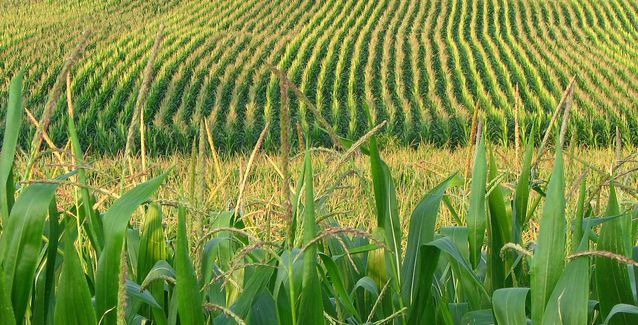Marketing, risk management keys to successful farming in 2019
by August 22, 2019 5:30 pm 591 views

Farming has always been a business that is at the mercy of many unpredictable factors, but farmers are facing some of the strongest headwinds they’ve dealt with in decades, Farm Credit MidSouth James McJunkins recently said at the Agriculture Council of Arkansas board meeting. Net farm income peaked in 2013 at $123.4 billion. That figure has dropped to a projected $69.4 billion this year.
“A lot of us are just getting by and some have no room for error,” McJunkins said. “We need to manage the environment we’re in.”
Farm Credit MidSouth is part of a nationwide cooperative that has more than 500,000 customers with $272 billion in loan volume. It has four associations in Arkansas with $3.8 billion in assets. The company employs 265 workers and has 40 offices throughout the state.
Trade wars, bad weather, real estate prices, input costs, capital projects and others dominate farmers concerns, he said. The key is to develop a comprehensive management plan and stick to it. Any good plan will work towards eliminating as much risk as possible, he added.
He likened the current conditions to those in the 1980s. Many farmers went bankrupt when interest rates skyrocketed and land values crashed. The good news for farmers in Northeast Arkansas is that those two variables seem to not be major factors right now.
Ways to eliminate risk could include additional irrigation, diversifying crops and putting together a marketing strategy.
Years ago, some of the worst irrigation systems in the region were not far from the Mississippi River. Better irrigation systems were developed in recent years and it has reduced the risks during droughts.
Another positive move made by farmers has been crop diversification. There was a time when corn was rarely grown in Northeast Arkansas, mostly just in Clay County, he said. Now there are hundreds of thousands of acres dedicated to the crop. In 2010, farmers began to reintroduce peanuts to the region after they’d been gone for decades. Sweet potatoes and other vegetables have also become staples in Northeast Arkansas.
Farmers are always looking for the highest price for their crops, but that’s not always the best strategy, he said. Getting a consistently profitable price should be the target of any good marketing strategy, he added.
Interest rates have been low and property prices have steadily grown during the last decade. In 2010, agriculture acres were selling, on average in Northeast Arkansas, about $3,000 per acre. Prices ballooned up to 5,500 acres in 2018 and are projected to top $5,700 this year. There are parts of the region where acres still sell for as little as $3,500 and can sell for more than $7,000 per acre.
“We’ve pretty much remained flat (in the last several years),” he said.
